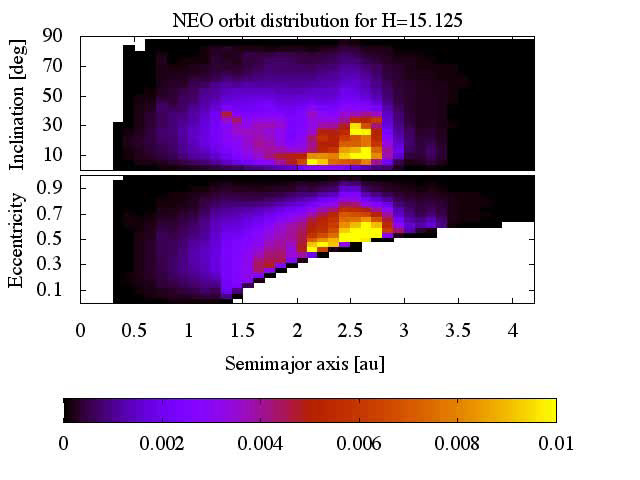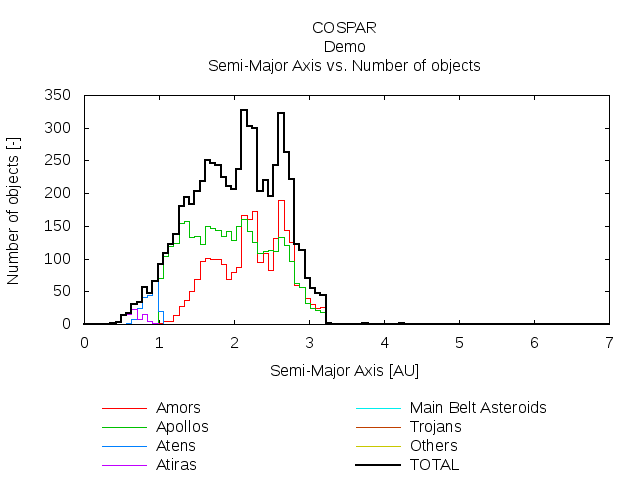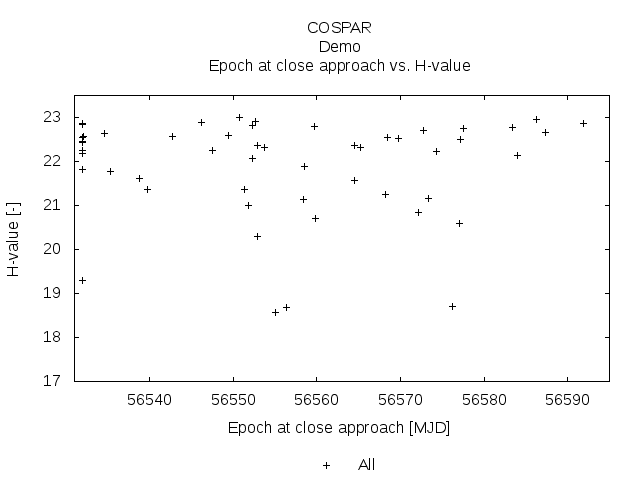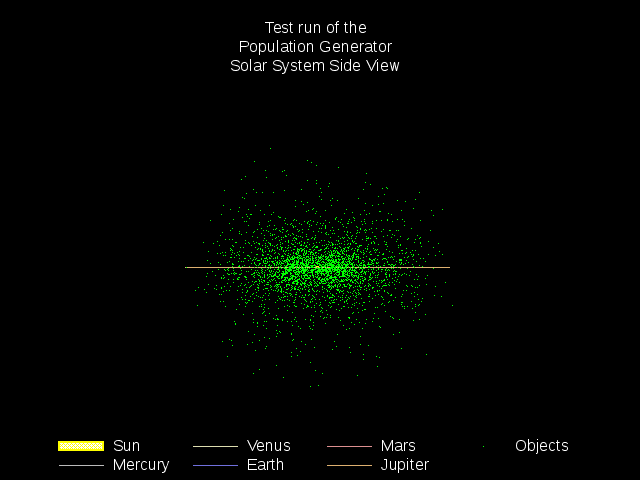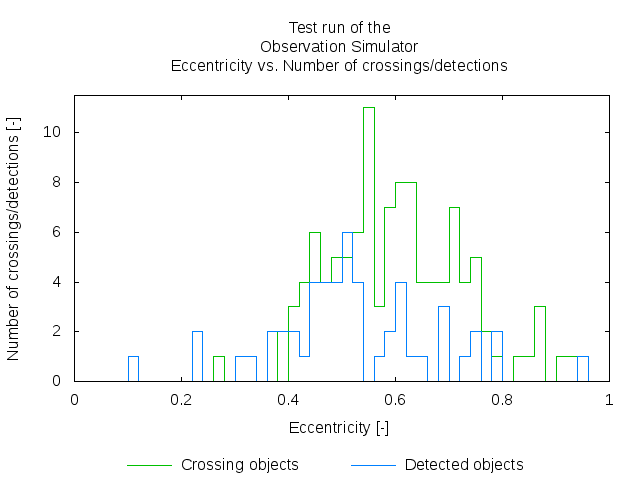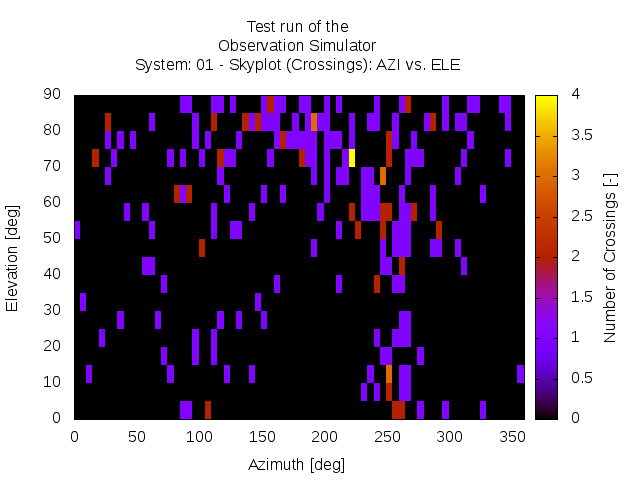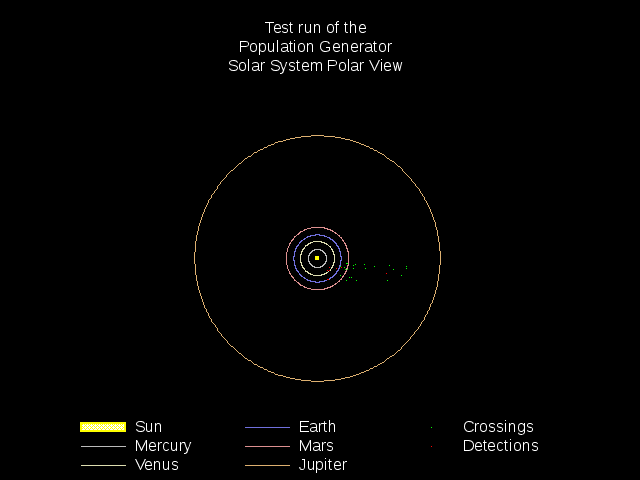Near-Earth Object Population Observation Program (NEOPOP)
During activities related to ESA's Space-Situational Awareness (SSA) programme, the need for an observation system simulation software tool became apparent. More specifically, the tool was required to be capable of:
- analysing the flux of small NEOs near the Earth
- evaluating the efficiency of all-sky surveys
- evaluating the discovery rate of telescopic surveys
- optimising observation strategies
- improving follow-up and radar observations
- performing risk assessment analysis
- performing trade-off studies on the observational options for the European SSA-NEO Segment (e.g. wide vs. deep survey) or to select locations for survey telescopes
- planning NEO observation campaigns, including the derivation of necessary instrument parameters
- validating algorithms used in the NEOCC (e.g. orbit determination, impact monitoring, orbit improvement, risk assessment, Mitigation)
Based on these requirements, the Near-Earth Object Population Observation Program (NEOPOP) has been developed allowing users to:
- Generate NEO populations based on the newly developed model by Granvik et al. (1)
- Simulate observations of NEO populations using a newly developed optical sensor performance model by Gelhaus
- Analyse NEO populations and NEO population observations
NEOPOP is implemented as a console program and can be operated conveniently through a Graphical User Interface (GUI) that comes with the tool.
The tool supports the following file formats:
- DYS files as used by the NEO Dynamic Site/Asteroids Dynamic Site (NEODyS/AstDyS) group
- MPC files as used by the International Astronomical Union Minor Planet Center (MPC) in their MPC Orbit (MPCORB) database
- DES files (Data Exchange Standard) as used by the Panoramic Survey Telescope And Rapid Response System (Pan-STARRS) group
Population Generation and Analysis
NEO populations may be generated in a random fashion (with parameter value range constraints) or based on a scientifically validated NEO model. NEOPOP is able to create populations based on the outdated Bottke model and on the recently developed one by Granvik et al. (1)
The new NEO model is based on the Catalina Sky Survey observations in the years 2006-2011 and based on more than 4000 NEO discoveries or redetections. It accurately models the NEOs' orbits as well as their absolute magnitudes and albedos.
The model is calibrated in the interval 17<H<25 (where H is the absolute magnitude of the object), and an extrapolation in absolute magnitude H is used to extend the model down to H=15 using two different parameter sets. As the NEO population for H<15 is assumed to be complete, known NEOs are used for this H range.
The Population Generation part of the tool outputs DYS, MPC or DES files. Additional physical properties are written to separate file containing the object source (Hungaria, Phocaea, …), object group (Aten, Apollo, …), albedo, minimum orbit intersection distance wrt. Earth, statistical collision probability wrt. Earth, and diameter. These additional parameters can be generated for an external population file, as well.
NEO populations may be plotted using 2D, 3D, scatter and solar system plots. It is also possible to conduct close-approach analyses and to generally filter populations using various attributes.
Observation Simulation and Analysis
NEOPOP allows the definition of ground- and space-based optical and radar observing systems (called 'sensor systems'). These sensor systems may be simulated deterministically or using an arbitrary number of Monte-Carlo runs. As a result, the tool outputs crossings – the objects that crossed a sensor system's field-of-view – for each sensor system and Monte-Carlo run. Sensor performance models additionally determine if a crossing could be detected by a sensor.
The optical sensor performance model by Gelhaus is particularly sophisticated. It calculates the background signal for a crossing by taking various background sources like planets, stars, galaxies, airglow and zodiacal light into account. It then calculates the object's signal and compares both to the sensor system's capabilities.
It is possible for users to let a sensor system's state change during observation time using observation strategies and to output artificial measurements for the sensor systems.
The observation results are written to text files, and can also be plotted. Additionally, "sky plots" can be created showing the whole sky from a sensor system's point-of-view at a certain epoch.
Project Background
NEOPOP has been developed as part of project "Synthetic Generation of a Near-Earth Object Population" (SGNEOP), contract ID AO/1-7015/11/NL/LvH, for ESA/ESTEC by Institute of Aerospace Systems (Technische Universität Braunschweig, TUBS, Germany) and Institute of Planetary Research (German Aerospace Center, DLR, Germany) with support of the Observatoire de la Côte d'Azur (OCA, France) and contributions of NEO experts.
(1) Granvik, M., Morbidelli, A., Jedicke, R., Bolin, B., Bottke, W. F., Beshore, E., Vokrouhlicky, D., Nesvorny, D., Michel, P. (2018). Debiased orbit and absolute-magnitude distributions for near-Earth objects. Icarus 312, 181–207.
Updates in version 2.1
- Files .dys are now compatible with Orbfit / AstOD format.
- Minor improvements and bug fixes.
Updates in version 2.0
- Enhancements to the handling of the Observation Strategy Definition (OSD) file.
- Improved Random Generator Seed functionality.

